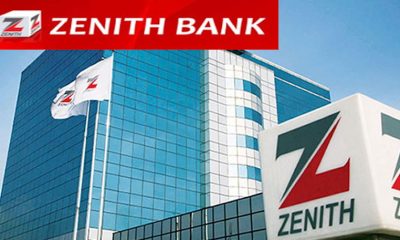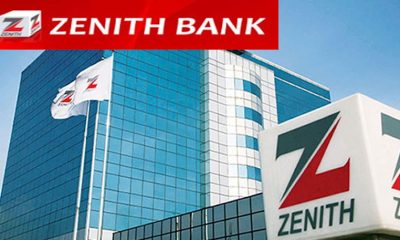By Chioma Obinagwam
National Bureau of Statistics (NBS) recently released Pension Commission (PenCom) data for fourth quarter 2017(Q4:2017), which indicated that pension assets rose by N7.5 trillion.
In a research conducted by Afrinvest, a leading independent investment banking firm, a breakdown of Pension Assets and Retirement Savings Account (RSA) membership as at December 2017, showed that total Fund Assets Under Management (AUM) was valued at N7.5tn, up 22.0 per cent year on year (Y-o-Y) and 4.9 per cent Quarter on Quarter (Q-o-Q) from N6.2trillion and N7.1trillion in full year(FY) FY:2016 and third quarter(Q3) Q3:2017, respectively.
Similarly, the report indicated, total number of registered RSA holders grew 6.5 per cent Y-o-Y and 1.5 per cent Q-o-Q to 7.8 million people from 7.3 million and 7.7million individuals as of FY:2016 and Q3:2017 respectively.
“We attribute the impressive growth in Pension Assets (which was higher than 16.1 per cent in FY:2016) to increase in Members’ Contribution as well as impressive Return on Investments (ROI) generated by Pension Fund Administrators (PFA) in a favorable investment climate of high yield on fixed income securities and bullish sentiment in the equity market,” the report indicated.
This, Afrinvest stated, is buttressed by Q3:2017 CBN data on pension assets which showed Members’ Contribution rose 15.2 per cent year to date (YTD) to N5.4 trillion while Reserves (accumulated surplus) were up 20.0 per cent YTD to N1.8 trillion.
However, it noted, the historical risk aversion of PFAs remains evident in asset allocation strategy as the ratio of government securities to total assets stayed at peak level of 72.4 per cent with FGN bonds and Treasury Bills the dominant holdings.
“Assets remained skewed to FGN bonds (53.8 per cent of total assets), up 4.4 per cent Q-o-Q to N4.0tn from N3.9tn in Q3:2017,” it continued.
PFAs, the research showed, also invested in recently introduced debt instruments in the domestic market such as the Sukuk and Green Bonds issued in the quarter while reducing their positions slightly in Treasury Bills and Agency bonds – down 7.3 per cent and 0.5 per cent Q-o-Q respectively.
Expectedly, domestic equity security asset surged 34.3 per cent Y-o-Y to N672.2 billion, the fastest annual growth since 2013, against the backdrop of improved sentiment in the equity market which buoyed returns and probably led to additional investments.
Yet, the ratio of ordinary shares holding (domestic and foreign) to total assets in FY:2017 (10.3 per cent) remained below regulatory cap of 20.0 per cent. Similarly, total PFA portfolio invested in infrastructure funds was estimated 0.1per cent compared to regulatory cap of 5.0 per cent.
Afrinvest said: “Since the Pension Reform Act of 2004 was passed into law, pension assets have recorded steady growth and PFAs have now become the largest non-bank domestic institutional investor base; yet, they have faced increased criticism for risk aversion and perceived asset-liability mismatch due to high concentration of assets in risk-free government securities.
In their defense, the relatively small size of pension assets (in comparison to GDP and Middle Income Countries), volatility in macroeconomic indicators and weak enforcement of contracts make the case for investing in risk assets and infrastructure less compelling.”
To address some of the concerns on assets-liability mismatch, PenCom recently introduced a Multi-Fund structure to align the age and risk profile of RSA holders with asset allocation.
The Multi-Fund structure divides RSA Fund into 3 Fund Types with different regulatory limits on exposure to variable income instruments (defined as investments that generate income or returns that cannot be pre-determined from the date the investments).
According to industry sources, the Multi-Fund structure will kick-off in March with an additional 6-month window to comply. We expect the implementation of the new structure to boost participation of PFAs in the equity market and alternative investment vehicles such as Infrastructure Bond and Private Equity.
“Also, we see a reduction in the scope of the Pension scheme as regards the private sector following the scheme’s amendment in 2014. The scheme applies to companies that have 15 employees and above (formerly 5 employees in 2004 act) and therefore effectively reduces the number of people who can benefit from the scheme. Although a micro pension scheme was introduced, we are yet to see data that supports how much it has been able to capture Small and Medium Scale Enterprises (SMEs). We believe that in order to effectively end old age poverty and cover 30.0 per cent of the working population under the Contributory Pension Scheme by 2024, there must be a conscious effort to monitor this sector of the working population,” the investment banking firm stated.













 Business7 days ago
Business7 days ago
 Business6 days ago
Business6 days ago
 Education6 days ago
Education6 days ago
 Crime7 days ago
Crime7 days ago
 Football13 hours ago
Football13 hours ago
 Covid-196 days ago
Covid-196 days ago
 Business7 days ago
Business7 days ago
 Latest4 days ago
Latest4 days ago
